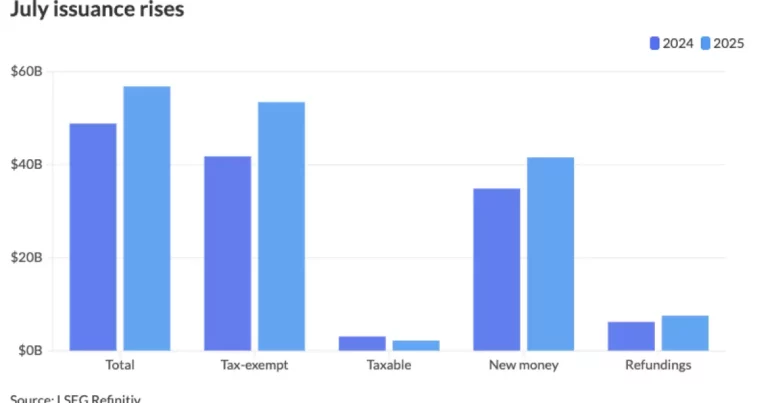Critical Analysis of Utah’s Alpine School District Bond Expansion: A Center-Right Skeptic’s Perspective

Utah’s largest public school system, Alpine School District, is embarking on a significant move to split into three autonomous districts, accompanied by a $201 million bond issuance to fund new educational infrastructure. At first glance, this appears to be a strategic response to demographic growth and the need for more tailored governance structures. However, a closer inspection reveals troubling implications about fiscal sustainability, bureaucratic fragmentation, and the true cost to taxpayers. While proponents tout the bonds as necessary investments in education, underlying issues suggest that these financial maneuvers serve short-term political and administrative goals more than the genuine long-term needs of students or the community.
The decision to divide the district reflects a desire for localized control, which, from a center-right perspective, could be justified by the principles of decentralization and accountability. Yet, this move also complicates governance, raises questions about duplication of administrative costs, and intensifies the potential for inconsistent policies across districts. The assignment of debt—proportionally divided based on tax assessments—further spreads the financial burden but may obscure the true long-term liabilities that future residents will inherit. This approach risks creating a fragmented educational landscape where resources are allocated more on political boundaries than on equitable or strategic planning.
Financial Risks and Credit Ratings: A Cautionary Tale
The bond ratings offer a mixed picture: Fitch Ratings assigns an AA-plus rating with a negative outlook, signaling concerns about the district’s long-term financial health. Although Fitch acknowledges the district’s good stewardship, the downgrade outlook hints at underlying vulnerabilities, especially with the West District assuming a “weak” long-term liability burden. The issuance is structured as a lease revenue bond, which indicates that the district will make annual lease payments to service the debt, transferring the financial obligations incrementally to the newly formed district.
Moody’s Aa2 rating, slightly lower than the district’s AAA issuer rating, reflects transition risks associated with the split—an acknowledgment that the imminent creation of new districts introduces instability and uncertainty. This recognition, however, does not preclude the issuance but rather underscores the delicate financial balancing act involved. The fact that Alpine’s existing debt exceeds $147 million, with projected additions of nearly $227 million, signals a mounting debt load that could strain future avenues of financing and operational flexibility.
From a conservative fiscal stance, these ratings and their outlooks suggest that the bonds are not a risk-free investment. They also raise questions about the long-term sustainability of such debt levels, especially given the expected financial “weakness” and the assumptions underlying the division. The risk is compounded by the fact that the state law enabling these bonds—Senate Bill 188—eliminates the need for voter approval over the next three years, transferring financial decisiveness from the community to legislated mandates.
The Political and Practical Consequences of Financialization
While the district presents the bond issuance as a necessary step to support growth and maintain quality education, critics argue that this approach largely exemplifies a form of fiscal opportunism. Borrowing at such a scale, especially under an unsupervised state law, might serve political convenience rather than strategic educational planning. The promise of investing in new school facilities can often overshadow the less glamorous reality: ballooning liabilities that could dwarf the district’s capacity to manage effectively without burdening future generations.
Moreover, the division of debt proportional to assessed values effectively means that wealthier districts or communities will shoulder more of the financial responsibility. This stratification can exacerbate existing inequalities and create a two-tiered system where some communities flourish with new investments, while others struggle under a heavier debt burden. Such disparities undermine the broader objective of equitable education access.
The reorganization also risks fostering a bureaucratic wildfire, with multiple districts vying for resources, administrative staff, and political influence. The fragmentation may lead to inefficiencies, with duplicated services and governance structures. From a conservative perspective, consolidation and shared governance—rather than formal splits—would better serve the community’s fiscal health while ensuring more consistent policy application across districts.
Final Reflections: A Cautionary Venture in Public Finance
The Alpine School District’s bond deal, viewed through a critical center-right lens, exemplifies a broader tendency in public finance: leveraging debt to mask underlying fiscal fragility and to pursue political or administrative goals under the guise of progress. While investment in education infrastructure is undeniably vital, the manner in which these bonds are structured, rated, and deployed warrants skepticism. The structural risks, complicated by the district’s impending division, suggest that future taxpayers may face higher-than-anticipated costs and liabilities, with benefits that could be unevenly distributed.
In the broader context of good governance, such a large debt issuance must be scrutinized carefully, with transparent mechanisms to ensure that the promise of new schools does not come at the expense of long-term fiscal responsibility. The shift towards debt-fueled expansion, especially under relaxed legal frameworks, risks creating cycles of dependency that ultimately undermine the very stability and quality of education the bonds aim to enhance. For voters and policymakers alike, recognizing these risks is crucial to maintaining a balanced approach—one that prioritizes prudent financial stewardship over short-term political expediency.





